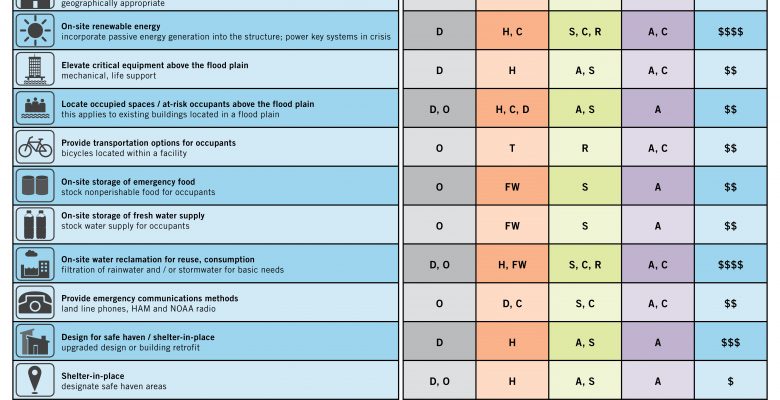The goal of this research project was to evaluate the relationship between resilient design strategies and their impact on the mental health of building occupants during a crisis event. We hypothesized that certain resilient design strategies were better suited to mitigate the negative effects on mental health, and, through analysis of this potential, be ranked by efficacy. The methodology for evaluating specific design strategies’ potential was a formula that measured each strategy’s potential to mitigate multiple contributing factors to victim stress in a crisis event. These factors were: the ability to address both acute and chronic events, the ability to address the five major categories of stressors, and finally the ability to address four major types of stress. After being scored against these factors, the strategies were then analyzed against cost of implementation to determine total efficacy. The evaluation revealed that the majority of the fourteen strategies evaluated have a potential for mitigating negative mental health impacts on building occupants. While some strategies may prove cost prohibitive for many buildings, nine of the fourteen strategies were considered marginal to low cost solutions that are easily implemented in both new and existing buildings.Once the vulnerability of a building or space is determined, priority can be given to implementation of the strategies best suited to address those factors.It is recommended that further field testing and data collection through surveys and interviews are necessary to investigate the effects that the design strategies covered in this research have on occupants’ stress.
This article originally appeared in Vol 08.01 of the Perkins+Will Research Journal. CLICK HERE to see the whole article.

